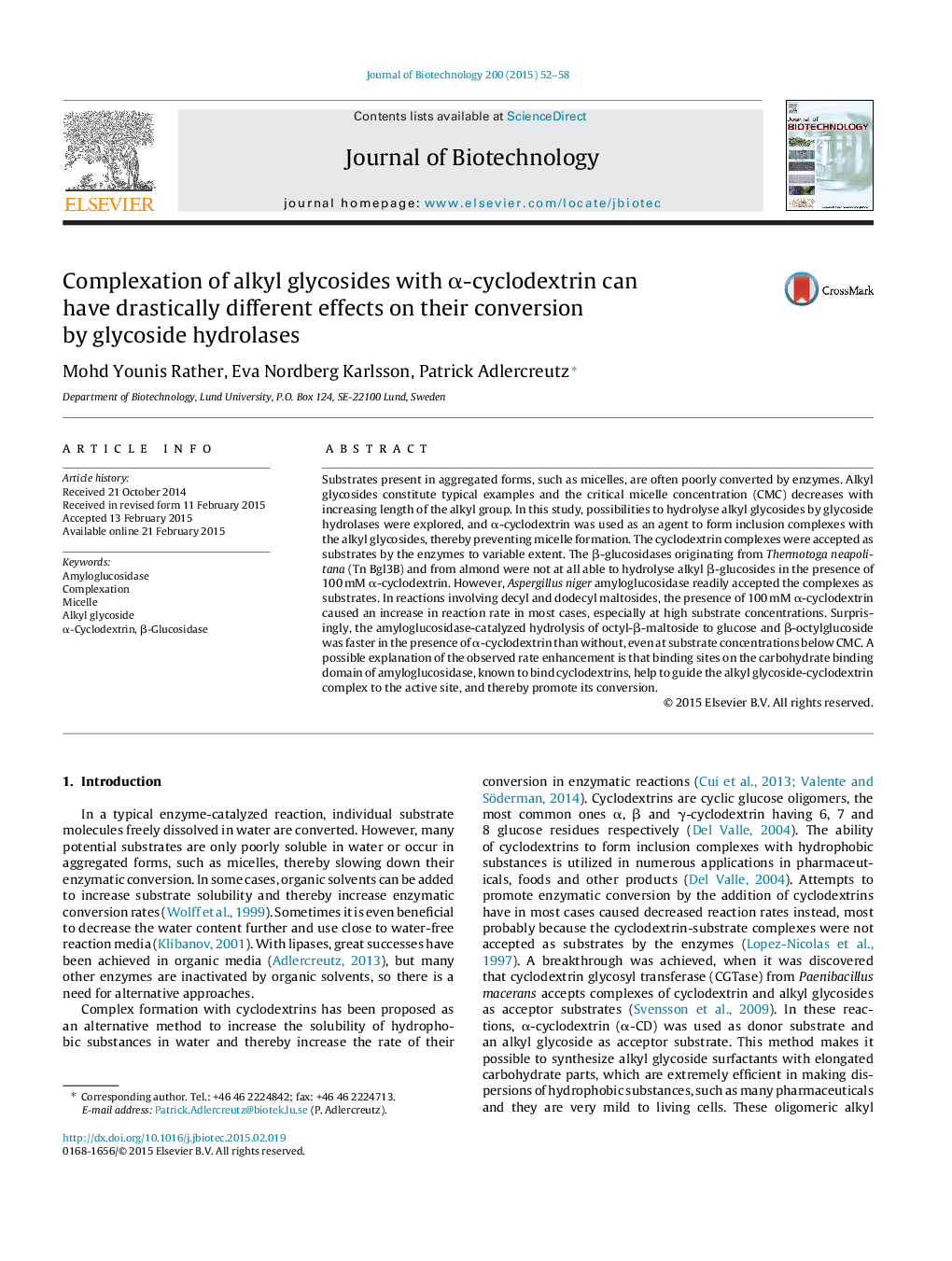| کد مقاله | کد نشریه | سال انتشار | مقاله انگلیسی | نسخه تمام متن |
|---|---|---|---|---|
| 22920 | 43394 | 2015 | 7 صفحه PDF | دانلود رایگان |

• Cyclodextrin complexes of alkyl glycosides are substrates of amyloglucosidase.
• The rate of alkyl glycoside hydrolysis was enhanced up to 3 times.
• Cyclodextrin prevented formation of poorly reactive substrate micelles.
• Two β-glucosidases did not convert cyclodextrin complexed alkyl glycosides.
Substrates present in aggregated forms, such as micelles, are often poorly converted by enzymes. Alkyl glycosides constitute typical examples and the critical micelle concentration (CMC) decreases with increasing length of the alkyl group. In this study, possibilities to hydrolyse alkyl glycosides by glycoside hydrolases were explored, and α-cyclodextrin was used as an agent to form inclusion complexes with the alkyl glycosides, thereby preventing micelle formation. The cyclodextrin complexes were accepted as substrates by the enzymes to variable extent. The β-glucosidases originating from Thermotoga neapolitana (Tn Bgl3B) and from almond were not at all able to hydrolyse alkyl β-glucosides in the presence of 100 mM α-cyclodextrin. However, Aspergillus niger amyloglucosidase readily accepted the complexes as substrates. In reactions involving decyl and dodecyl maltosides, the presence of 100 mM α-cyclodextrin caused an increase in reaction rate in most cases, especially at high substrate concentrations. Surprisingly, the amyloglucosidase-catalyzed hydrolysis of octyl-β-maltoside to glucose and β-octylglucoside was faster in the presence of α-cyclodextrin than without, even at substrate concentrations below CMC. A possible explanation of the observed rate enhancement is that binding sites on the carbohydrate binding domain of amyloglucosidase, known to bind cyclodextrins, help to guide the alkyl glycoside-cyclodextrin complex to the active site, and thereby promote its conversion.
Journal: Journal of Biotechnology - Volume 200, 20 April 2015, Pages 52–58